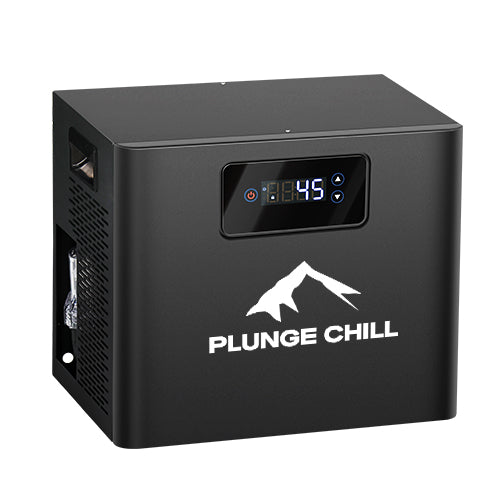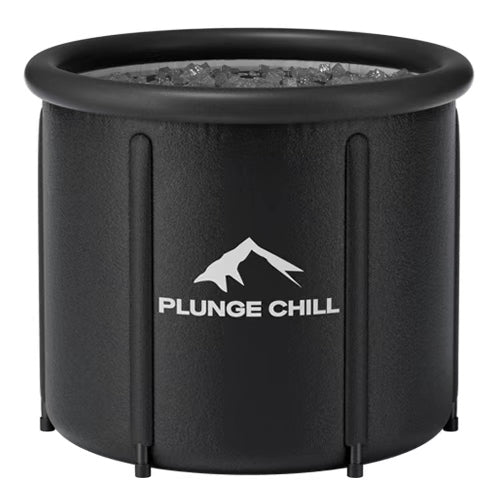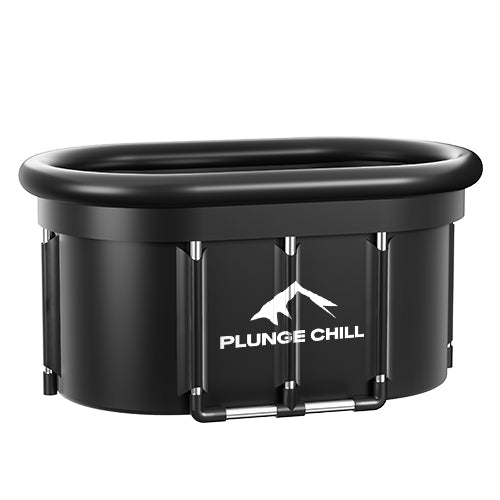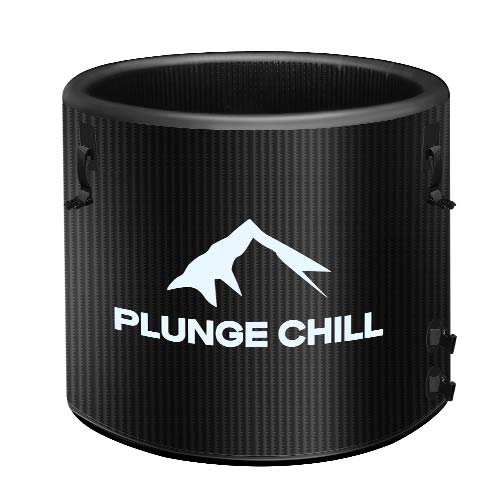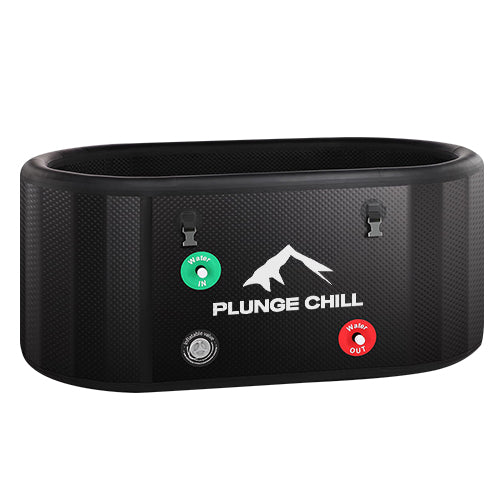Cold is a powerful physiological lever. A few seconds of icy air on your face, a hand in ice water, or a brief neck-cooling pulse can flip the balance of your autonomic nervous system and shift both heart rate and its beat‑to‑beat variability. The pattern of that shift—whether your heart rate rises or falls and whether vagal tone strengthens or weakens—depends on where and how the cold is delivered, how intense it is, how long it lasts, and who you are. This article summarizes what high‑quality research shows, explains why responses differ, and offers practical, safety‑first advice for anyone curious about using cold stimuli while monitoring heart rate with ring‑style wearables or other devices.
What “Heart Rate Transition” Means in the Cold
Cardiovascular responses to cold unfold in phases. At onset, cutaneous thermoreceptors detect a threat to thermal balance and trigger a fast sympathetic surge. Blood vessels constrict to conserve heat, blood pressure rises, and respiration becomes shallow and quick; heart rate may increase in some paradigms, particularly with sudden immersion or cold pressor stimuli. Over tens of seconds to minutes, reflexes that favor oxygen conservation can counterbalance this response, most notably when the trigeminal system and vagal pathways are engaged, producing bradycardia and a shift toward parasympathetic dominance. In recovery, many healthy participants exhibit a vagal “rebound,” with heart rate falling and heart rate variability increasing compared with the cold‑on phase.
Two metrics help frame these transitions. Heart rate variability (HRV) captures the millisecond‑to‑millisecond variability of normal R–R intervals and is widely used as a non‑invasive window into autonomic balance; rMSSD and pNN50 are common time‑domain indices of vagal tone, while high‑frequency (HF) power represents parasympathetic activity in frequency‑domain analysis. The rate‑pressure product, calculated as systolic blood pressure multiplied by heart rate, approximates myocardial oxygen demand. These variables move in characteristic ways depending on the specific cold stimulus.
What the Evidence Shows
Immediate sympathetic drive versus vagal braking
Laboratory and clinical observations converge on a simple rule: cold almost always raises vascular resistance and blood pressure. Reviews from Observatoire de la prévention summarize increases in systolic blood pressure on the order of five to thirty millimeters of mercury and diastolic increases of about five to fifteen millimeters of mercury with skin or airway cooling. Heart rate responses are more heterogeneous. A cold pressor test or cold inhalation often raises heart rate by roughly five to ten beats per minute in healthy adults, consistent with a strong sympathetic burst. By contrast, cold focused on the face can stimulate trigeminal afferents and the diving reflex, producing vagal activation and heart‑rate slowing, particularly when breathing is steady and the exposure is controlled.
Local cold on the head and neck: site matters
Findings diverge sharply depending on the target area. A short‑time HRV study reported on SpringerLink found that placing an ice bag on the forehead for a five‑minute epoch reduced pNN50 and HF power compared with a thermoneutral control, indicating a short‑term reduction in parasympathetic activity under those conditions in a young sample. In a separate randomized controlled trial published on PubMed Central, brief lateral neck thermode stimulation in healthy adults reduced heart rate and increased rMSSD, consistent with increased cardiac‑vagal activation, with the neck effects outperforming cheek and forearm placements. Together, these results imply that millimeters of placement and differences in protocol—forehead versus lateral neck, static versus pulsed, and breathing control—can flip the sign of the response. It is reasonable to infer, with moderate confidence, that protocols engaging the cervical vagus more directly (e.g., lateral neck cooling pulses) are more likely to elicit bradycardia and rMSSD increases than forehead‑only cold, while still acknowledging the small samples and short exposures.
Whole‑body and environmental cold: dose and duration dominate
Systematic reviews and meta‑analyses in peer‑reviewed outlets report a pattern consistent with post‑exposure parasympathetic rebound in healthy people. Summaries cited by Harvard Health Publishing and Journal of Thermal Biology describe increases in HRV indices such as rMSSD and HF power and slight decreases in heart rate after cold water immersion or cryostimulation, alongside modest increases in mean blood pressure. A more focused study in Taylor & Francis examined prolonged cold‑air exposures at 23 to −4 ℉ in 12 men and found all HRV indices changed significantly across conditions, with progressively stronger parasympathetic activation and sympathetic withdrawal as temperature fell; SDNN emerged as the most sensitive index and tracked with blood pressure, pulse, and hand temperature. Cold water ingestion at 39.2 ℉ in healthy young women, reported in Frontiers in Physiology, produced a transient pattern of co‑activation with heart rate reductions and rMSSD increases over about thirty minutes, suggesting that internal thermoreceptors can evoke vagal effects without skin immersion.
Cold plus exertion raises cardiac work
Adding exertion magnifies cold’s hemodynamic costs. Reviews and experimental work summarized in peer‑reviewed sources report that cold raises systemic vascular resistance and rate‑pressure product during submaximal workloads even when heart rate remains similar, and in coronary disease the combination of cold inhalation and static exercise can precipitate earlier ischemia. The practical implication is straightforward: cold on its own is rarely dangerous for healthy individuals, but cold plus exertion is a risk amplifier in those with hypertension, coronary artery disease, or heart failure.
Population‑level risk rises as temperatures fall
At the population level, a systematic review and meta‑analysis in Frontiers in Cardiovascular Medicine reported that each degree Celsius drop below a local reference temperature was associated with higher cardiovascular mortality and morbidity. Cold spells were associated with substantial relative increases in cardiovascular events, especially among older adults and in certain climate zones. These findings underscore that individual acute responses scale to meaningful public‑health patterns.

A Practical Map of Cold Stimuli and Heart Responses
|
Cold stimulus |
Typical heart‑rate transition |
HRV directionality |
Context and dose |
Representative source |
|
Cold pressor or cold inhalation |
Transient heart‑rate increase with a clear blood‑pressure rise |
Ambiguous during exposure; often a sympathetic pattern |
Hand in ice water or inhaling very cold air; seconds to minutes |
Observatoire de la prévention; American Heart Association News |
|
Forehead ice bag |
Reduced parasympathetic indices under five‑minute exposure |
pNN50 and HF decreased compared with control |
Five‑minute epochs in young adults |
SpringerLink HRV study |
|
Lateral neck cooling pulses |
Heart‑rate reduction with rMSSD increase |
Vagal activation during brief pulses |
Repeated 16‑second thermode intervals at the neck |
PubMed Central randomized controlled trial |
|
Cold water ingestion (39.2℉) |
Heart‑rate reduction over thirty minutes |
rMSSD and pRR50 increases, transient co‑activation |
500 mL drunk within five minutes |
Frontiers in Physiology |
|
Whole‑body immersion or cryostimulation |
Slight heart‑rate decrease post‑exposure with parasympathetic rebound |
rMSSD and HF increases after exposure; mean blood pressure rises modestly |
Minutes of immersion or very cold air exposure |
Journal of Thermal Biology meta‑analysis; Harvard Health Publishing |
|
Prolonged cold air at 23 to −4 ℉ |
Progressive parasympathetic activation with colder temperatures |
SDNN most sensitive; correlates with pulse, blood pressure, hand temperature |
Thirty‑minute exposures across four temperatures |
Taylor & Francis study |
The heterogeneity in this table reflects real differences in physiology: the faster and more threatening the cold feels to the body, the stronger the initial sympathetic surge. Protocols that recruit trigeminal or cervical vagal pathways favor bradycardia and higher rMSSD, especially when breathing is calm, posture is stable, and exposure is pulsed rather than continuous.

Why Responses Differ: Site, Dose, Breathing, Posture, and Altitude
Small shifts in method change outcomes. Local cold at the forehead did not produce the same parasympathetic pattern as lateral neck cooling, plausibly because cervical vagal fibers are more directly influenced by neck‑side thermoreceptors. Dose matters, too; meta‑analytic summaries suggest that brief, intense whole‑body cold often yields a parasympathetic rebound in the post‑exposure window, while mild, prolonged cooling during work can keep sympathetic tone elevated. Breathing modulates vagal input; rapid shallow breaths during the “cold shock” phase bias the system toward sympathetic dominance, whereas slow nasal breathing can help unmask vagal effects. Posture is not trivial; subzero experiments have shown that supine work can alter central blood volume and ECG changes compared with seated exercise, complicating heart‑rate interpretation during cold. Environmental context also matters. Clinics in high‑altitude regions report that thinner air raises cardiac workload at baseline, and abrupt temperature swings add strain, so those settings deserve more caution.
Where the evidence is incomplete, inferences are noted. It is plausible, with moderate confidence, that neck‑side cooling pulses are a more reliable way to induce bradycardia and rMSSD increases than forehead ice in healthy participants, given the randomized trial at the neck and the opposite finding at the forehead. Confidence is lower regarding ideal breathing patterns during each protocol, because many studies did not standardize respiration.

Benefits and Risks in Plain Terms
Cold stimuli are neither a panacea nor a menace; they are tools with specific trade‑offs. On the benefit side, in healthy adults a brief, controlled dose of cold is associated with short‑term increases in parasympathetic indices and a small reduction in heart rate after exposure. Neck‑directed cooling pulses, cold water ingestion, and post‑immersion recovery windows appear to be the friendliest times and places to see those autonomic improvements. Small trials suggest potential for acute stress relief when HRV rises and heart rate falls, and wearable users commonly report day‑to‑day improvements when they track protocols consistently, as described by coaching articles that compile practical HRV logging data.
On the risk side, cold reliably constricts vessels and elevates blood pressure even in healthy people, and it can provoke arrhythmias or ischemia in those with underlying heart disease. Organizations such as Harvard Health Publishing caution that evidence for long‑term cardiovascular benefits remains limited. American Heart Association News emphasizes the hazards of sudden cold‑water immersion below about 60 °F, including involuntary gasps, dangerous hyperventilation, and rapid loss of coordination. Cold plus exertion increases myocardial oxygen demand and can precipitate symptoms earlier in coronary disease, with particular caution warranted for snow shoveling and static effort outdoors. In short, healthy individuals can experiment with modest, progressive exposures, but anyone with cardiovascular risk should prioritize medical clearance and conservative protocols.
Practical Protocols You Can Consider
If you are healthy and cleared by a clinician, the lowest‑risk on‑ramp is a “cool finisher” rather than a full plunge. Ending a warm shower with thirty to sixty seconds of cool water, gradually working toward one to three minutes at roughly 50–60 °F, limits the cold‑shock phase while still delivering a detectable autonomic stimulus. Slowing your breathing through the transition tends to feel more tolerable, and gentle rewarming with layers and light movement afterward is typically easier than jumping to a hot shower. For a localized stimulus, lateral neck cooling with a flexible gel pack for brief pulses can be a pragmatic way to explore neck‑specific effects. Cold water ingestion at around 39.2℉ is another simple probe that research has tested; plan the sequence and timing, sit or recline, and let your wearable log the thirty‑minute window that follows.
If you are exercising, keep intensity modest in the cold—and even more modest if wind, wetness, or altitude are in play. Aim to warm up indoors, cover the face or at least warm inhaled air if you are cold‑sensitive, and stop immediately if chest discomfort, unusual breathlessness, or dizziness emerges. Hydrate, because hemoconcentration in the cold adds to hemodynamic strain, and limit alcohol and caffeine around exposures, since both can disrupt thermoregulation. Finally, set a clear plan if you are around water; never plunge alone and stage warm clothing within arm’s reach for rapid rewarming.

Measuring Heart Rate Transition with Jewelry‑Like Wearables
Ring‑style wearables and fabric straps measure optical pulse and compute HRV, and they are well suited to detect heart‑rate transitions before, during, and after cold stimuli. For HRV, the most stable comparison point is a consistent morning rMSSD reading. This approach is recommended by coaching resources that focus on practical measurement, and it aligns with clinical studies that used controlled conditions, posture, and timing to reduce noise. For session‑based monitoring, capture a five‑minute baseline, log the exact stimulus, and then collect five‑minute segments during and after the exposure, noting posture and breathing. Expect variability from day to day; trends over weeks are more meaningful than single‑day bumps. If your device tracks skin temperature at the hand or finger, that signal can complement HRV by indicating peripheral vasoconstriction during extreme cold.
When reporting your data, use your own baseline. Absolute HRV values vary widely between people and even by device, and cross‑person comparisons often mislead. The Taylor & Francis study singled out SDNN as a sensitive index across cold intensities, but time‑domain vagal metrics such as rMSSD are generally more robust for day‑to‑day personal tracking.

Care and Buying Tips
Choosing tools for cold protocols and heart‑rate tracking is less about brand names and more about fit for purpose. For wearables, prefer devices that offer reliable rMSSD, resting heart rate, and, ideally, raw data export so you can verify trends. Water resistance, sampling rate, battery life, and steady optical readings during motion matter if you plan to log exercise in the cold. If you intend to test neck cooling, select flexible gel packs that conform to the lateral neck without excessive weight; ensure the cover’s texture prevents skin injury and set a timer to avoid prolonged numbness. For water exposures, temperature control is safety control; a simple, accurate thermometer is not optional, and containers with stable footing and easy egress lower risk. If you are setting up outdoors, plan the rewarm: dry towels staged in advance, insulating layers, and a sheltered spot out of wind.
Care extends to protocols. Calibrate exposures conservatively, add only one variable at a time, and leave at least forty‑eight hours between harder sessions as you learn your responses. Hydration is a quiet performance factor in the cold; keep fluids steady and avoid relying on thirst. Most important, build habits for recognition and response: practice standing down at the first sign of chest pain, marked breathlessness, or lightheadedness, and have a partner present for water work.
Special Populations and When to Avoid Cold Stimuli
High‑risk groups deserve extra caution or a hard no unless a clinician actively supervises the plan. These include people with coronary artery disease, heart failure, arrhythmias, uncontrolled hypertension, diabetes with autonomic involvement, peripheral artery disease, Raynaud’s phenomenon, and those on rate‑ or pressure‑lowering medications. Harvard Health Publishing underscores that many promised benefits of cold plunges can be achieved more safely via regular exercise, and American Heart Association News stresses that sudden immersion in water below about 60 °F can be dangerous even for apparently healthy people. In regions with abrupt temperature swings or at altitude, such as high‑plains and mountain communities, the thinner air and weather volatility add workload and unpredictability, and clinics in those settings advise shorter, warmer, and more supervised approaches.
Definitions You’ll See in Studies
Heart rate variability refers to the normal beat‑to‑beat variation in R–R intervals; higher rMSSD and HF power generally indicate greater parasympathetic activity in short‑term recordings. pNN50 is the percentage of adjacent normal beats differing by more than fifty milliseconds and is another vagal‑leaning time‑domain metric. The high‑frequency band, typically 0.15–0.4 Hz, is tied to respiratory sinus arrhythmia and vagal tone. SDNN, the standard deviation of normal‑to‑normal intervals, reflects overall variability and often responds strongly to cold intensity in environmental studies. The rate‑pressure product, heart rate multiplied by systolic blood pressure, is a proxy for myocardial oxygen demand. Vasoconstriction is the cold‑driven narrowing of blood vessels that conserves heat while raising blood pressure and cardiac workload. The cold pressor test is a standardized hand‑in‑ice‑water stimulus that produces a robust sympathetic surge.
Frequently Asked Questions
Q: Does a short cold shower always lower heart rate afterward?
A: Not always. Many healthy people see a slight reduction during recovery, particularly if the exposure is brief and breathing is calm, but some protocols—especially sudden, intense cold or those focused on the forehead—can produce neutral or even vagal‑negative patterns in the short term. The site, dose, and your own physiology determine the direction.
Q: Where should I put a cold pack if I want to see a vagal response?
A: Research in healthy adults suggests lateral neck pulses are more likely than forehead cooling to reduce heart rate and increase rMSSD under controlled conditions. This is an inference made with moderate confidence based on small randomized trials and should be approached conservatively.
Q: How long should I stay in an ice bath to improve HRV?
A: There is no consensus dose. Reviews indicate short exposures can increase HRV post‑immersion in healthy participants, but benefits are modest and temporary, and safety margin narrows as water gets colder. Start with cool finishes, not plunges, and escalate only with medical clearance if you have risk factors.
Q: Is it safe to combine cold exposure with exercise?
A: Cold plus exertion increases blood pressure and myocardial oxygen demand and can precipitate earlier symptoms in coronary disease. If you are healthy, keep intensity modest, warm up indoors, and protect the face and airways. If you have cardiovascular risk, prioritize thermoneutral exercise and clinical guidance.
Q: Which wearable metric should I track to evaluate cold protocols?
A: Track morning rMSSD for stability and compare it to your own baseline over weeks. For sessions, record heart rate and HRV in five‑minute segments before, during, and after the exposure, noting posture, breathing, and temperature.
Key Takeaway
Cold stimuli alter heart rate and its variability in stimulus‑specific ways. Sudden, local, and intense stimuli such as a cold pressor test often raise heart rate acutely, while neck‑side pulses, cold water ingestion, and the post‑immersion window of brief whole‑body exposures are more likely to tilt the needle toward vagal dominance in healthy adults. The same physiology that makes cold a useful tool also raises risk by increasing blood pressure and myocardial work, especially when coupled with exertion or pre‑existing cardiovascular disease. If you choose to experiment, start conservatively, measure what matters, and let safety steer the plan.
References
- https://cupola.gettysburg.edu/cgi/viewcontent.cgi?article=2078&context=student_scholarship
- https://www.health.harvard.edu/heart-health/cold-plunges-healthy-or-harmful-for-your-heart
- https://repository.lsu.edu/cgi/viewcontent.cgi?article=3818&context=gradschool_theses
- https://pubmed.ncbi.nlm.nih.gov/37988319/
- https://repository.lib.fsu.edu/islandora/object/fsu%3A183523
- https://research.monash.edu/files/256139723/33091221_oa.pdf
- https://www.nap.edu/read/5197/chapter/12
- https://www.catholichealthli.org/blog/cold-plunges-are-they-healthy-or-harmful-your-heart
- https://www.frontiersin.org/journals/cardiovascular-medicine/articles/10.3389/fcvm.2023.1084611/full
- https://www.heart.org/en/news/2022/12/09/youre-not-a-polar-bear-the-plunge-into-cold-water-comes-with-risks
Disclaimer
By reading this article, you acknowledge that you are responsible for your own health and safety.
The views and opinions expressed herein are based on the author's professional expertise (DPT, CSCS) and cited sources, but are not a guarantee of outcome. If you have a pre-existing health condition, are pregnant, or have any concerns about using cold water therapy, consult with your physician before starting any new regimen.
Reliance on any information provided in this article is solely at your own risk.
Always seek the advice of a qualified healthcare provider with any questions you may have regarding a medical condition, lifestyle changes, or the use of cold water immersion. Never disregard professional medical advice or delay in seeking it because of something you have read in this article.
The information provided in this blog post, "The Impact of Cold Stimuli on Heart Rate Transition," is for informational and educational purposes only. It is not intended to be a substitute for professional medical advice, diagnosis, or treatment.
General Health Information & No Medical Advice
